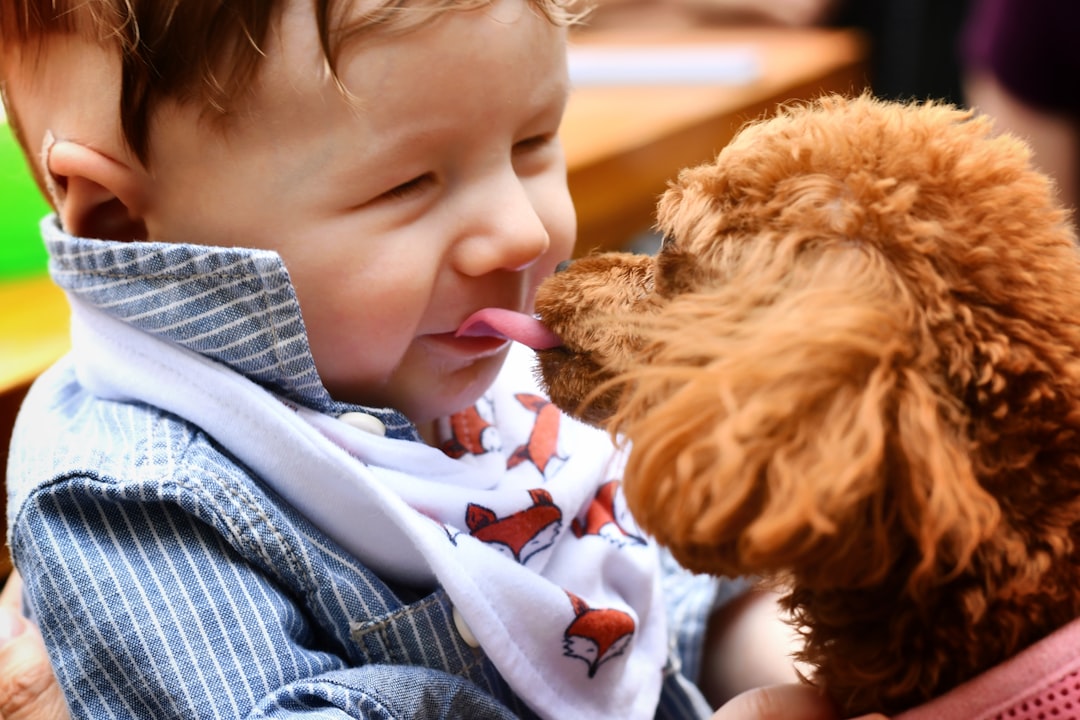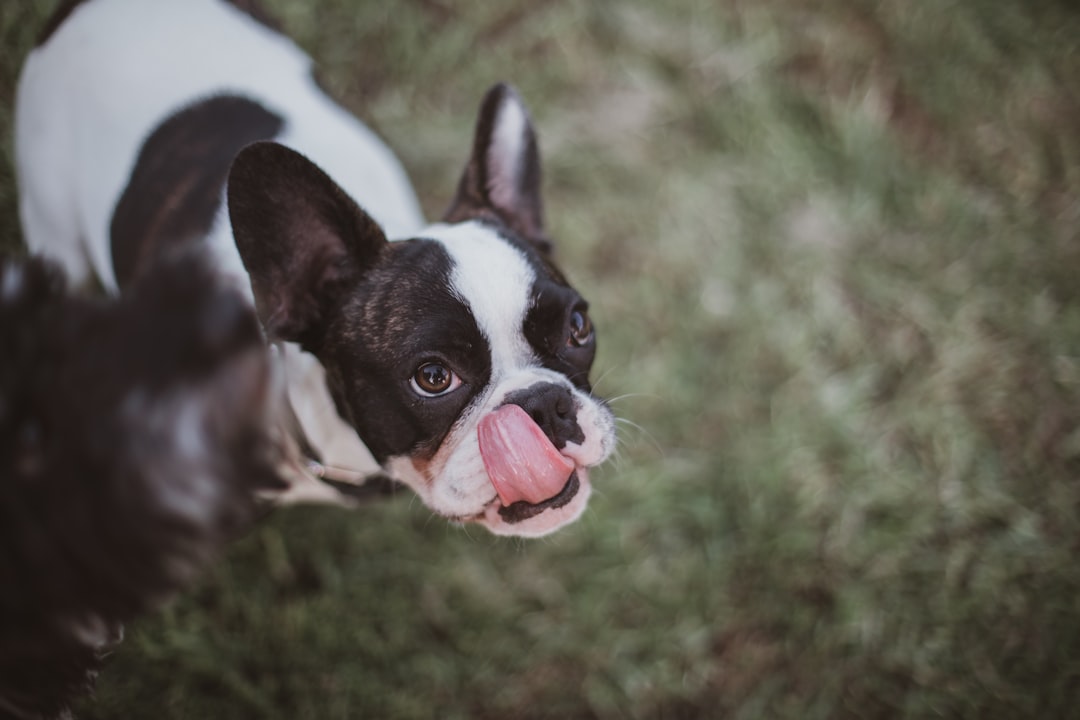The Lick of Love: Exploring the Science Behind Why Dogs Lick
The article explores the evolutionary and biological basis of dog licking, reasons behind dog licking, the science behind it, managing excessive licking behavior, the psychological and emotional impact of dog licking, and implications for dog owners and caretakers.
Understanding the Evolutionary and Biological Basis of Dog Licking
The act of dog licking is not merely a random behavior but has deep roots in their evolutionary history and biology. This behavior can be traced back to the concept of neoteny, which refers to the retention of juvenile traits into adulthood, a common phenomenon observed in domesticated animals. An example of this neotenic behavior is the act of licking, which is a vestige of the ancestral behavior of wolf pups. In the wild, wolf pups would lick the mouths of adult pack members to solicit regurgitated food, a behavior that has evolved into a form of communication, bonding, and social interaction in domesticated dogs.
The evolutionary and biological basis of dog licking also points to the strong influence of neoteny on their behavior. This retention of juvenile traits has led to dogs using licking as a means of communication, seeking attention, and forming emotional bonds with their human companions. This not only highlights the intricate connection between dogs and humans but also sheds light on the underlying evolutionary and biological factors that drive this behavior, emphasizing its significance in the context of canine psychology and social dynamics.
 Reasons Behind Dog Licking
Reasons Behind Dog Licking
The act of licking is deeply ingrained in a dog’s behavior, serving various purposes that are rooted in their evolutionary and biological makeup. Dogs lick themselves not only for grooming but also to cool themselves down, similar to how humans sweat to regulate body temperature. This self-grooming behavior is a remnant of their wild ancestors’ survival instincts, where staying clean and cool was essential for their well-being. For example, after a long walk or play session, dogs often lick their paws to remove dirt and debris, showcasing their instinctive need for cleanliness and hygiene.
Moreover, the reasons behind dogs licking people are multifaceted. While it can be a display of affection and love, it also functions as a way for dogs to communicate and seek attention. For instance, a dog may lick its owner’s face to convey their longing for interaction, recognizing that such behavior often garners a response from the human. Additionally, dogs may lick humans as a coping mechanism for anxiety, as this soothing action triggers the release of oxytocin in their brain, creating a sense of comfort and security.
Understanding these reasons behind dog licking is crucial for pet owners, as it sheds light on the innate behaviors and needs of their canine companions. By recognizing the evolutionary and biological basis of dog licking, caretakers can better comprehend and address their pets’ natural inclinations, ultimately fostering a deeper bond and a more fulfilling relationship.
The Science Behind Dog Licking
The act of licking is a complex behavior that serves various purposes for dogs, including communication, grooming, and seeking attention. When dogs lick, it triggers the release of oxytocin in both dogs and humans, commonly referred to as the “love hormone”. Oxytocin is a neuropeptide that plays a crucial role in social bonding, trust, and emotional attachment. This release of oxytocin indicates that dog licking is associated with feelings of love and affection, both towards their human companions and other dogs.
For example, when a dog licks its owner’s face, it may be an expression of their affection and an attempt to strengthen their bond. In the wild, puppies lick their mother’s face to communicate hunger and to stimulate her to regurgitate food for them. This behavior is a clear indication of how licking is deeply ingrained in the social structure of dogs and serves as a means of expressing their emotions and seeking reassurance. Additionally, dogs may also lick their owners as a way of seeking attention and comforting themselves in stressful situations, such as during thunderstorms or when feeling anxious.
Moreover, licking is a multifaceted behavior that is not solely limited to expressing affection. It can also be a form of communication. For instance, when a dog licks another dog’s face, it can be a submissive gesture, showing deference to the other dog. Understanding the science behind dog licking provides insight into the intricate ways in which dogs interact and express their emotions, making it essential for dog owners to comprehend the various reasons behind this behavior.
Managing Excessive Licking Behavior
Excessive licking in dogs can lead to skin problems, infections, and behavioral issues, making it crucial for dog owners to monitor and manage this behavior effectively. Excessive licking, whether it’s directed towards themselves, other dogs, or humans, can cause skin irritation, hair loss, and the formation of hot spots, which are painful and can lead to infections.
One technique for managing excessive licking behavior involves positive reinforcement. For example, if a dog licks excessively due to anxiety, providing them with an alternative behavior to cope with stress, such as a chew toy or a puzzle feeder, can help redirect their attention. Additionally, rewarding the dog with praise or treats when they engage in the alternative behavior can reinforce the new habit and reduce excessive licking.
Another effective strategy for managing excessive licking behavior is seeking professional grooming services when necessary. Make sure you research the dog groomers in Stamford for the best fit for you and your dog. A professional groomer can identify any underlying skin issues that may be causing the excessive licking and provide appropriate treatments. Additionally, they can provide tips on coat maintenance, such as keeping the fur trimmed to minimize the licking habit and prevent the development of hot spots.
By addressing the root causes of excessive licking and providing alternative outlets for their needs, dog owners can effectively manage and mitigate this behavior. This not only helps in maintaining the overall health and well-being of the dog but also fosters a more harmonious relationship between the dog and its owner.
Exploring the Psychological and Emotional Impact of Dog Licking
Furthermore, dog licking behavior can be a manifestation of various psychological and emotional states. For instance, excessive licking can be a potential sign of anxiety, stress, or pain in dogs. It is crucial for pet owners to pay attention to changes in their dog’s licking habits, as this can offer valuable clues about the dog’s emotional and mental state. For example, if a dog suddenly starts licking excessively or obsessively, it may be an indication that the dog is experiencing discomfort or distress, and prompt veterinary attention may be necessary to address any underlying issues.
Moreover, the act of licking can also be a way for dogs to communicate their need for attention, comfort, or reassurance. Dogs may use licking as a tool to seek emotional support from their owners, especially during times of stress or uncertainty. By understanding the psychological and emotional motivations behind a dog’s licking behavior, pet owners can respond with empathy and provide the necessary support to address their pet’s emotional needs. This can involve engaging in activities that provide comfort and security to the dog, as well as creating a safe and nurturing environment that promotes positive emotional well-being for the animal.
Implications for Dog Owners and Caretakers
Monitoring a dog’s licking behavior is crucial for their overall well-being. Dog owners and caretakers must be aware of the potential health and behavioral issues associated with excessive licking. It’s essential to recognize that excessive licking can lead to skin problems, fur damage, hot spots, and even behavioral problems. For example, excessive licking can result in the development of hot spots, which are painful and inflamed areas on the skin. These hot spots can become infected, leading to further discomfort for the dog and potentially requiring medical intervention.
Taking precautions and implementing appropriate care measures can help prevent skin problems and ensure the optimal health of the dog. This includes regular grooming and maintaining a clean environment for the dog. Additionally, seeking professional guidance from a groomer can provide valuable tips on managing excessive licking behavior. For instance, a groomer can help by trimming the dog’s coat in a way that reduces the likelihood of excessive licking and also recommend strategies for promoting positive behaviors in the dog. By understanding the implications of dog licking behavior, owners can provide the necessary support and create a conducive environment for their dogs. This may involve creating a calming and stress-free environment, engaging in regular exercise and playtime to alleviate anxiety, and seeking veterinary advice if the licking behavior becomes obsessive or unusual. Understanding the psychological and emotional impact of dog licking can also enable owners to address any underlying issues that may be contributing to the behavior.
Overall, by being mindful of a dog’s licking behavior and taking proactive measures, owners and caretakers can contribute to their pet’s overall well-being and ensure a healthy and happy life for their furry companion.


